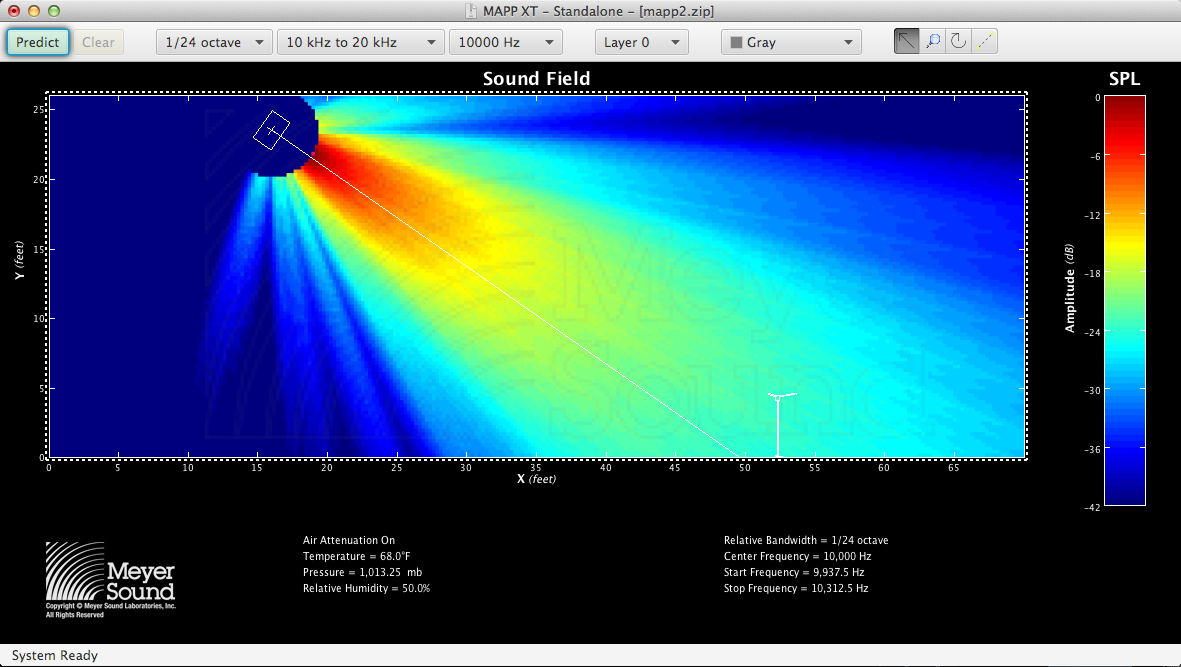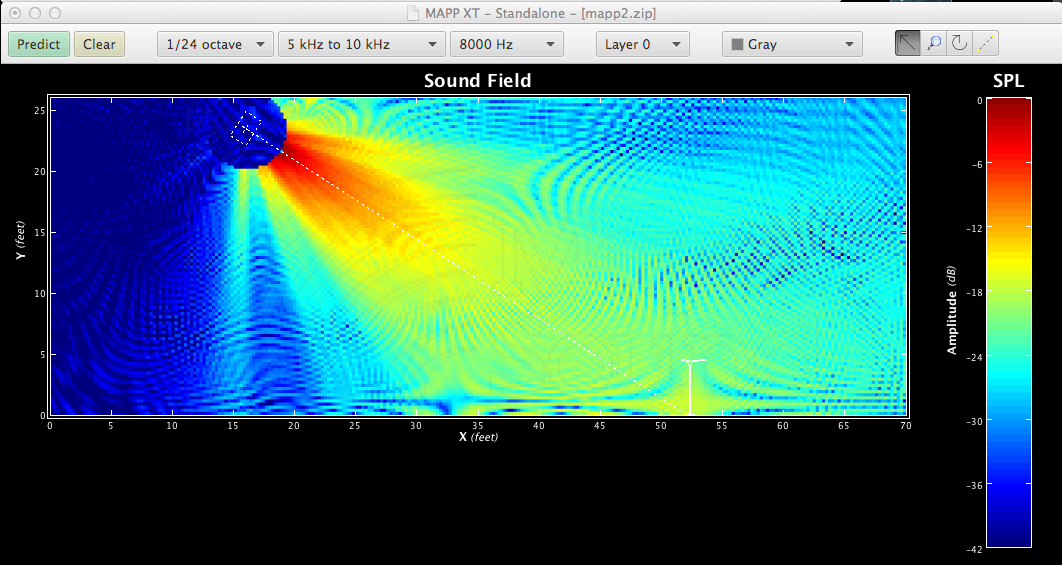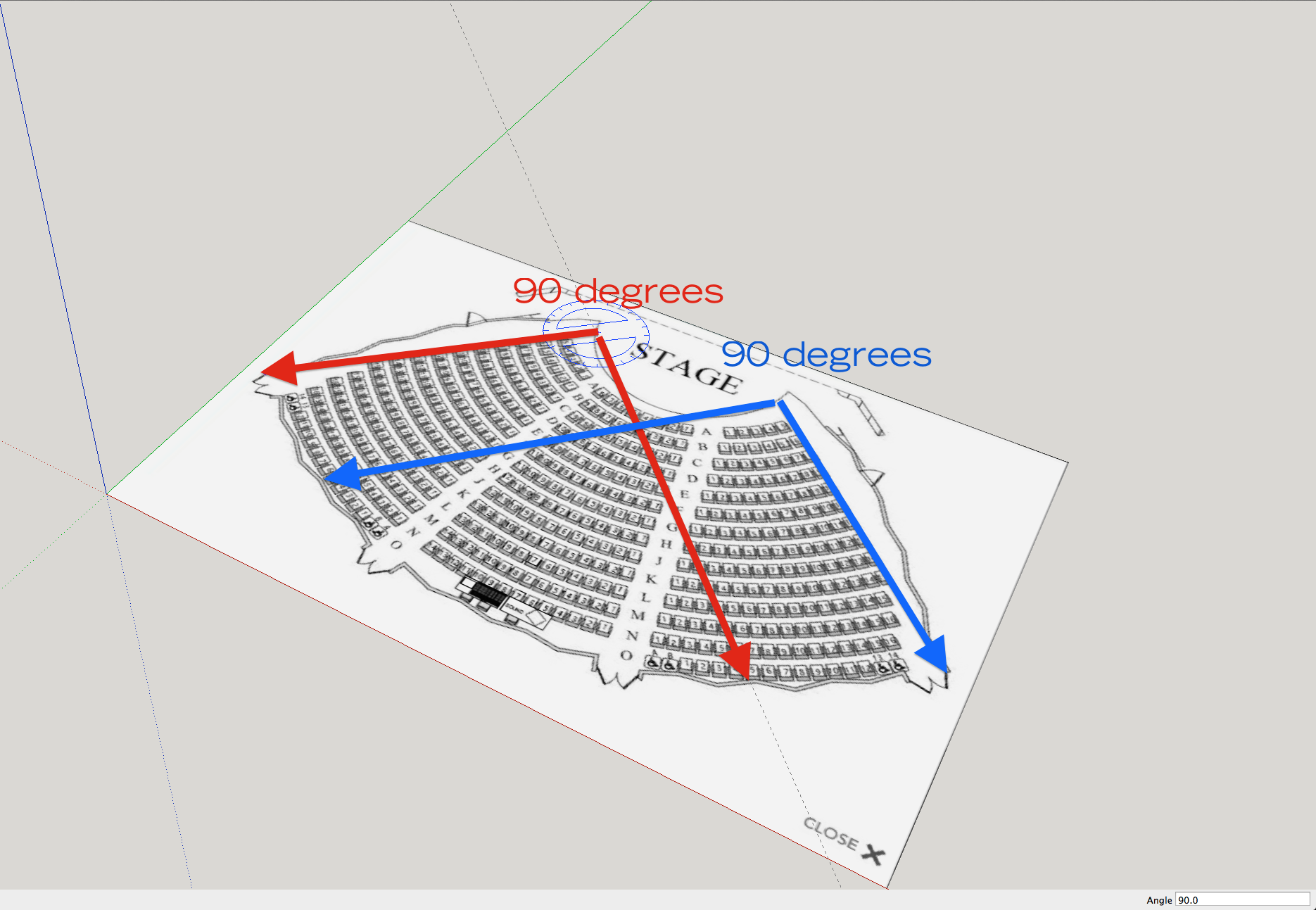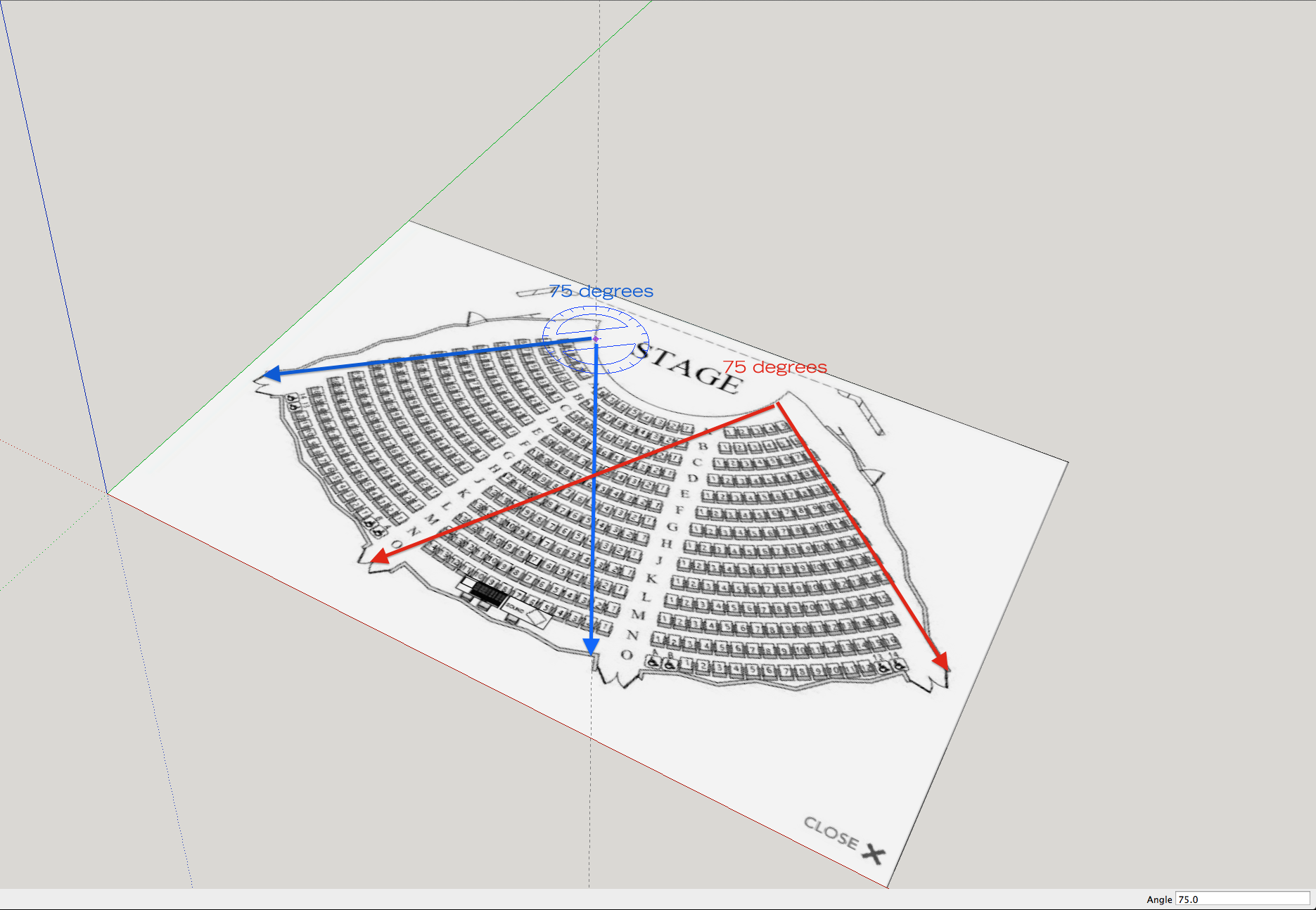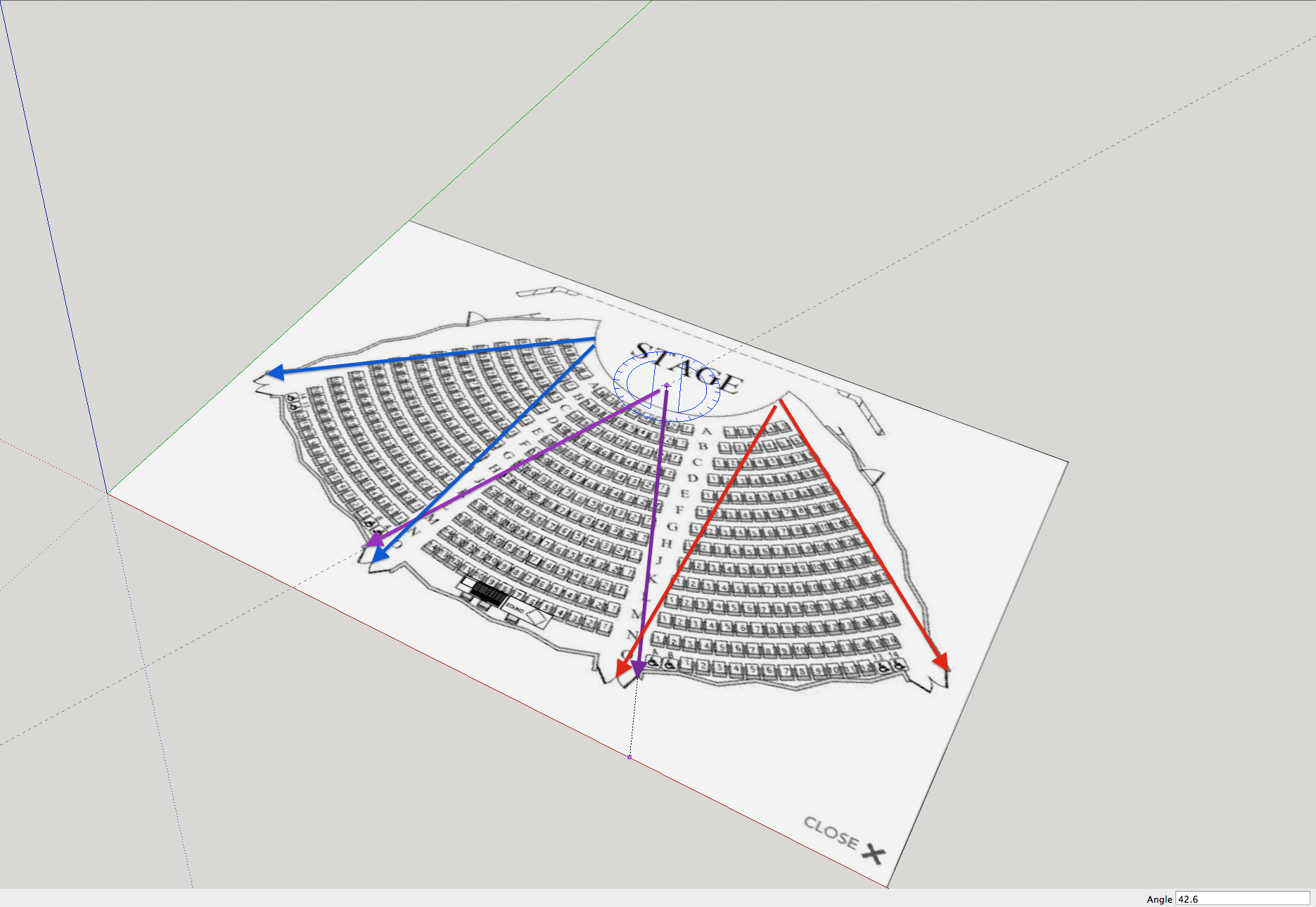Meyer Sound has acoustic modeling software called MAPP and recently released a new version called MAPP XT.
I spent more than an hour last night learning how it works. MAPP allows you to move speakers and mics around in a virtual venue and see what happens via the frequency response / impulse response and amplitude / SPL windows.
This model is of a single Meyer Sound – UPQ-2P in a medium sized room with one measurement mic. The model is showing what the response of that cabinet @ 10k. Pretty nice.
This is what you get when you enable the 4 boundary reflections. Not such a pretty design.
One of the reasons MAPP XT can provide such useful information is because Meyer has done all the data gathering in advance. When you click on “PREDICT” in MAPP, it’s not calculating things locally on your computer. It’s actually calling into a server at Meyer Sound, doing the number crunching and then sending the results back to your screen. The true test of a model is whether or not what the model shows reflects what happens in the field. Does the install work as designed and modeled? How different is the final install compared to the model? My experience installing a lot of different Meyer PA systems in a lot of different venues (all modeled in MAPP) is that things are typically within a few degrees and a few percentage points of what the model showed regarding positions, angles and coverage. Amazing!
Meyer MAPP XT is free. They do require registration but that’s a simple process.
Here is a step by step instruction for getting up and running quickly:
Once you have the software, you’ll want to watch the video tutorials to learn how to use it. Meyer’s video tutorial library for MAPP can be found here. Click on the Educational Videos link to access the videos:

